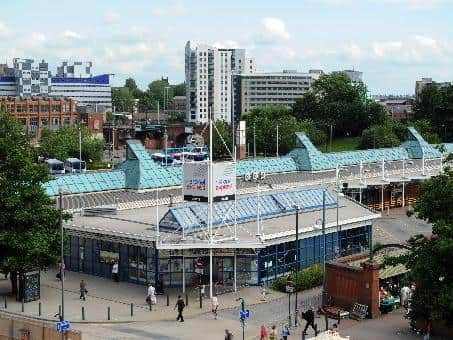Why 'poor value for money' projects like improving Leeds Bus Station are more likely to be backed by government after reform of Green Book funding rules
West Yorkshire Combined Authority is aiming to progress multi-million pound schemes which promote bus travel, cycling and walking in favour of car use in places including Leeds, Harrogate and Steeton and Silsden in West Yorkshire.
And a report to be discussed next week sets out how changes to the way government departments decide where and how to spend their money means projects outside London and the South East are now more likely to find favour with Whitehall mandarins.


Advertisement
Hide AdAdvertisement
Hide AdIt says the so-called 'benefit to cost ratio' (BCR) for some of the capital projects being developed by local leaders would represent poor value for money when assessed using the Department for Transport’s Transport Appraisal Guidance.
But it adds: "This is because whilst calculating benefits to costs of a transport scheme there are many more journeys made by car than are made by bus, cycling and walking and as a consequence the monetised benefits arising from improvements to bus, cycling and walking journeys may be outweighed by the monetised dis-benefits to car users.
"However, a key strategic objective of investment is to encourage modal switch to more sustainable modes and therefore whilst the ‘core’ BCR for some schemes may be low, discounting the dis-benefits to car users from the appraisal will result in a higher BCR and where possible this ‘range of BCR’ will be presented to support decision making."
In the same report, a £5.7m scheme to deliver improvements to Leeds bus station and ensure that it offers "passengers a positive gateway experience" was given a BCR rating of 0.97:1, meaning it is expected to deliver less value than its overall cost.
Advertisement
Hide AdAdvertisement
Hide AdIn his spending review announcement last November, Chancellor Rishi Sunak said changes to the Green Book, a set of rules it uses to determine the value generated by government schemes, would allow those "in all corners of the UK to get their fair share of our future prosperity".
It means the process of ranking transport, energy, schools or hospital investment will be widened beyond a narrow definition of benefit compared to cost.
Those calculations, the Treasury now acknowledges, have inherently favoured the government investing continuously in the South East of England and London. This is because the values of economic return are influenced by existing high property prices in those regions.
In a recent column for The Yorkshire Post, Thirsk and Malton MP Kevin Hollinrake wrote that "in the past, the Green Book has allocated expenditure principally where the well-paid jobs are."
Advertisement
Hide AdAdvertisement
Hide AdHe said: "Creating 100 new jobs in London and the South-East, at £41,000 each, will mean a much better return in terms of value for money than creating 100 jobs in the North-East, so obviously, the Green Book has always prioritised investment in London and the South-East.
"The Government has quite rightly changed that; strategic objectives are now part of the equation of where money is spent. I very much welcome that. It is critical to this discussion."
The combined authority report said that when assessing value for money, "a stronger emphasis can now be placed on the strategic case and how the strategic objectives and priorities of the Combined Authority will be met through the delivery of a project".
These could include the need to deliver the 'levelling up' agenda promoted by Boris Johnson, tackling climate change and increasing active travel and public transport use.
Advertisement
Hide AdAdvertisement
Hide AdOther schemes being progressed by the authority include improving the area around Harrogate railway station with improved crossing points for pedestrians and segregated/dedicated lanes for cyclists.
The aim of the scheme, which has a 'medium' BCR rating of 1.7 to 1, is to "ultimately transform Harrogate Rail Station to a 21st century, recognisable gateway, and a sustainable, multi-modal transport hub".
And another scheme to deliver a pedestrian and cycle bridge, over the western arm of the A629 roundabout between Steeton and Silsden in West Yorkshire has a medium BCR rating of 1.79 to 1. So far only £700,000 cost of the £5.5m project has been identified by the authority.
